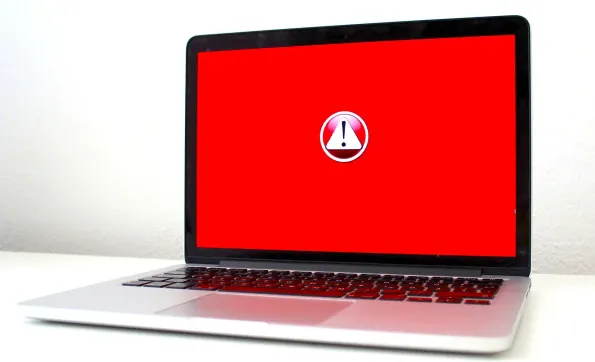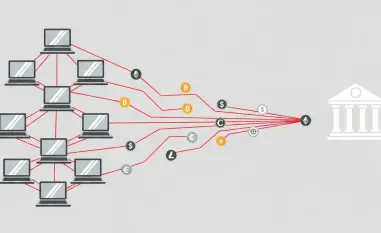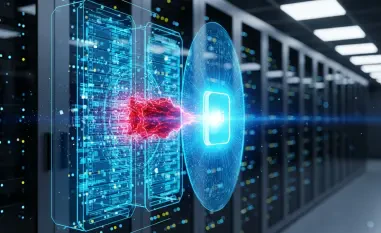In 2024, the realm of cybersecurity experienced a transformative phase, with both attackers and defenders adapting to a rapidly evolving digital landscape. This period marked a significant increase in the frequency, sophistication, and disruption caused by cyberattacks, necessitated by the exponential growth in digital transformation and the interconnectedness of systems across industries. This article delves into the ten most common cyberattacks of 2024, analyzing their mechanisms, real-world examples, and providing comprehensive insights to help organizations strengthen their cybersecurity posture.
Malware Attacks
Malware attacks continue to be a significant threat to both individuals and organizations. These malicious software programs are designed to damage, disrupt, or gain unauthorized access to computer systems. As technology advances, cybercriminals are becoming more sophisticated, creating malware that can evade detection and cause extensive damage. It is crucial for everyone to stay informed about the latest threats and to implement robust security measures to protect their digital assets. Regular updates, the use of reliable anti-virus software, and practicing safe browsing habits are essential steps in defending against malware attacks.
Rise of Ransomware
Malware attacks continued to be a prominent threat in 2024, with ransomware incidents seeing a significant rise. Ransomware, a type of malicious software that encrypts data and demands payment for its release, has evolved with the advent of Ransomware-as-a-Service (RaaS) platforms. These platforms have democratized access to sophisticated ransomware tools, enabling even less-skilled attackers to execute damaging attacks. Notable examples include the attacks on VOSSKO, a German food processor, and Japan’s Port of Nagoya, which resulted in substantial financial and operational damages. These events underscored the escalating threat that ransomware poses to industries worldwide.
The evolution of ransomware has made it increasingly difficult for organizations to protect their assets. Attackers are now using double extortion tactics, where they not only encrypt data but also threaten to leak it, adding more pressure on victims to pay the ransom. This shift in ransomware tactics necessitated a more proactive approach in cybersecurity, focusing on not only preventing infections but also ensuring data integrity and secure backups. Organizations have been urged to adopt advanced threat detection systems and robust incident response strategies to mitigate the risks associated with ransomware.
Evolution of Malware Types
Beyond ransomware, other forms of malware such as viruses, spyware, and worms also posed significant threats. These malicious software types targeted systems to disrupt operations, steal sensitive data, or cause damage. For instance, spyware was increasingly used for corporate espionage, allowing attackers to covertly monitor and extract valuable information from targeted organizations. Worms, on the other hand, spread rapidly across networks, causing widespread disruption and financial losses. The increasing complexity of these attacks underscored the need for robust endpoint detection and response (EDR) tools, regular software updates, and comprehensive backup protocols to mitigate potential damages.
In response to the evolving malware landscape, cybersecurity experts recommended a multi-layered defense strategy. This included the implementation of advanced antivirus solutions, network segmentation to limit the spread of malware, and continuous monitoring of network traffic for suspicious activities. Additionally, employee training programs focused on recognizing and reporting potential malware threats played a crucial role in enhancing organizational resilience against such attacks. As malware threats continued to evolve, organizations that adopted a proactive and comprehensive approach to cybersecurity were better positioned to defend against these malicious activities.
undefined
Surge in Phishing Incidents
Phishing attacks surged dramatically in 2024, with a reported 202% increase in phishing messages. Attackers employed various channels such as email, SMS (smishing), and voice calls (vishing) to deceive individuals into revealing sensitive information. Spear phishing, which targets specific individuals or organizations, and multichannel phishing that exploited platforms like LinkedIn and Microsoft Teams, were particularly effective. High-profile incidents included the RockYou2024 password leak and the “Ticket Heist” scam during the Paris Olympics. These incidents highlighted the increasing sophistication of phishing tactics and the growing need for effective defense measures.
The rise in phishing attacks also saw the emergence of more personalized and convincing tactics. Attackers used detailed social engineering techniques to craft messages that appeared legitimate, often impersonating trusted contacts or well-known organizations. This increased the likelihood of victims falling for the scams and divulging confidential information. To counter this, organizations were encouraged to adopt advanced email filtering systems with real-time threat detection capabilities and to implement stringent verification processes for any requests involving sensitive data or financial transactions.
Defense Against Phishing
In its deliberate approach to addressing the complexities of phishing attacks and enhancing cybersecurity, the organization has implemented new measures. These measures are designed not only to prevent unauthorized access to sensitive information but also to educate employees on recognizing and responding to phishing attempts. This comprehensive strategy includes regular training sessions, simulated phishing exercises, and advanced email filtering technologies. The goal is to create a robust defense mechanism that minimizes the risk of cyber threats and protects valuable data from malicious actors. By fostering a culture of awareness and vigilance, the organization aims to stay ahead of evolving phishing tactics and ensure a secure work environment.
To combat the rise in phishing attacks, organizations must train employees to recognize phishing attempts, deploy email filtering systems with real-time threat detection, and enable multi-factor authentication (MFA). These measures can significantly reduce the risk of falling victim to phishing schemes and protect sensitive information from being compromised. Employee training programs should include simulated phishing exercises to help staff identify and respond to potential threats effectively. Additionally, organizations should establish clear protocols for reporting suspected phishing attempts to ensure swift action and minimize damage.
Implementing robust security awareness programs is crucial in creating a culture of vigilance within organizations. Regular updates on the latest phishing tactics and ongoing education on cybersecurity best practices empower employees to act as the first line of defense against phishing attacks. Furthermore, technical measures such as domain-based message authentication, reporting, and conformance (DMARC) can help prevent email spoofing and increase the overall effectiveness of email security policies. By combining these defensive strategies, organizations can create a multi-layered approach to safeguarding against the ever-increasing threat of phishing.
Distributed Denial of Service (DDoS) Attacks
Increasing Frequency and Intensity
DDoS attacks, which involve overwhelming networks with traffic to render services unavailable, increased by 20% year-over-year in 2024. These attacks were often used by state-sponsored actors to disrupt critical services. Amplification attacks, which exploited protocols like DNS and NTP, were commonly used to magnify attack traffic. Significant incidents included a record-breaking 4.2 Tbps attack reported by Cloudflare and various state-sponsored campaigns targeting crucial infrastructure. The increasing frequency and intensity of these attacks underscored the growing threat they posed to the stability and availability of critical services.
As DDoS attacks became more sophisticated, attackers began utilizing multi-vector approaches that combined different attack methods to overwhelm defenses. This made it increasingly challenging for organizations to effectively mitigate these threats using traditional security measures alone. In response, the cybersecurity community emphasized the need for advanced detection and response strategies, incorporating machine learning and artificial intelligence to identify and counteract DDoS attacks in real time. By leveraging these technologies, organizations could enhance their ability to detect unusual traffic patterns and respond quickly to mitigate the impact of such attacks.
Mitigation Strategies
To effectively minimize risks and potential issues, organizations can implement a variety of mitigation strategies. These may include adopting robust cybersecurity measures, engaging in comprehensive risk assessments, and establishing clear communication channels. Additionally, promoting a culture of continuous improvement and learning can help organizations stay resilient in the face of changing environments and emerging threats.
To defend against DDoS attacks, organizations should use Content Delivery Networks (CDNs) for traffic distribution, deploy DDoS mitigation services, and monitor network traffic for anomalies. These strategies can help absorb and mitigate the impact of DDoS attacks, ensuring the continuity of critical services. CDNs play a crucial role in distributing traffic across multiple servers, preventing individual servers from being overwhelmed. Additionally, DDoS mitigation services can identify and filter malicious traffic before it reaches the target network, reducing the likelihood of service disruption.
Another effective approach to mitigating DDoS attacks involves implementing rate limiting and traffic shaping techniques to control the flow of incoming traffic. This helps ensure that legitimate users can still access services even during an attack. Organizations were also advised to develop and regularly update DDoS response plans, conducting drills to test their preparedness and identify potential weaknesses. Collaboration with internet service providers (ISPs) and other stakeholders proved beneficial in enhancing defenses and coordinating responses to large-scale DDoS attacks. By adopting a comprehensive and proactive defense strategy, organizations could better protect themselves from the increasing threat of DDoS attacks.
Insider Threats
Rise in Insider Threats
Insider threats saw a fivefold increase in 2024, stemming from malicious employees or negligence by staff. These threats were particularly elusive due to legitimate access privileges, making detection challenging. Incidents like the Hathaway ISP data breach, where a hacker exploited insider vulnerabilities to expose sensitive data, highlighted the critical need for robust insider threat management. Insider threats could arise from various sources, including disgruntled employees, corporate espionage, or unintentional actions by well-meaning staff members. This diversity made it imperative for organizations to adopt comprehensive strategies to address the risks posed by insiders.
Detecting insider threats required a combination of advanced monitoring tools and a strong emphasis on fostering a culture of security within the organization. Behavioral analytics tools proved effective in identifying abnormal activities that may indicate insider threats, such as access patterns that deviated from an employee’s typical behavior. Additionally, organizations were encouraged to implement strict access controls, ensuring that employees only had access to the information necessary for their roles. This “least privilege” approach helped minimize the potential impact of insider threats by reducing the amount of sensitive data accessible to any single individual.
Managing Insider Threats
In its deliberate approach to addressing the complexities of cryptocurrencies, the SEC opted for another delay in its verdict on the spot Ethereum ETF. The extension grants the SEC an opportunity not only to conduct an in-depth examination of Ethereum’s suitability for ETF status but also to source public insight, which could heavily sway the conclusion. This speaks to the SEC’s attentiveness to the nuances of digital assets and their integration into regulatory frameworks, which it does not take lightly. The situation closely parallels the stalling faced by Grayscale, who is also waiting for the green light to transform its Ethereum Trust into a spot ETF, raising questions about the contrasting regulatory processes for Bitcoin and Ethereum.
To manage insider threats, organizations should implement Zero Trust Architecture, monitor user activities with behavioral analytics tools, and conduct regular audits with strict access controls. These measures can help detect and mitigate insider threats, protecting sensitive data from being compromised by trusted individuals. Zero Trust Architecture operates on the principle of “never trust, always verify,” ensuring that every access request is thoroughly validated regardless of its origin. This approach significantly enhances security by continuously monitoring and verifying access privileges.
Regular security audits played a crucial role in identifying potential vulnerabilities and ensuring compliance with established security protocols. These audits involved assessing access controls, reviewing user activities, and identifying any discrepancies or anomalies that could indicate insider threats. Employee training and awareness programs also played a vital role in mitigating insider threats by educating staff on the importance of data security and the potential risks associated with insider actions. By combining technical solutions with a culture of security awareness, organizations could effectively manage insider threats and protect their valuable assets.
Advanced Persistent Threats (APTs)
Stealthy and Prolonged Campaigns
APTs are stealthy, prolonged campaigns aimed at stealing data or causing disruption while evading detection. In 2024, state-sponsored groups like China’s Volt Typhoon targeted critical infrastructure, preparing for potential geopolitical conflicts. These attacks were resource-intensive, often exploiting software vulnerabilities or using social engineering tactics. APTs involved highly skilled attackers who meticulously planned their operations to remain undetected for extended periods, allowing them to collect valuable information or disrupt critical processes without immediate detection. This made APTs particularly challenging to defend against, as traditional security measures were often insufficient to identify and mitigate these sophisticated threats.
The tactics used in APTs included spear phishing to gain initial access, followed by lateral movement within the network to escalate privileges and access sensitive data. Attackers often remained within the targeted network for months or even years, conducting reconnaissance and exfiltrating data without triggering alerts. This required organizations to adopt advanced threat detection and response capabilities, leveraging machine learning and behavioral analytics to identify abnormal activities indicative of APTs. Continuous monitoring and timely patching of software vulnerabilities were also critical in minimizing the risk of exploitation by APT actors.
Defense Against APTs
To defend against APTs, organizations should employ intrusion detection systems (IDS), regularly update software, conduct vulnerability assessments, and segment networks. These measures can help detect and mitigate APTs, protecting critical infrastructure from prolonged and stealthy attacks. IDS play a crucial role in monitoring network traffic for signatures of known threats and anomalies consistent with APT activities. By continuously analyzing network traffic and alerting security teams to potential threats, IDS help organizations respond promptly to suspicious activities.
Network segmentation was another essential strategy in defending against APTs. By dividing the network into smaller, isolated segments, organizations could limit the lateral movement of attackers and contain potential breaches. Regular vulnerability assessments and timely patching of software were also critical in reducing the attack surface and preventing the exploitation of known vulnerabilities. Additionally, organizations were encouraged to establish comprehensive incident response plans and conduct regular drills to ensure preparedness in the event of an APT incident. By adopting a multi-layered defense strategy, organizations could enhance their resilience against the sophisticated threats posed by APTs.
Man-in-the-Middle (MitM) Attacks
Intercepting Communications
MitM attacks intercepted communications between parties to steal or manipulate sensitive information. Attackers exploited SSL/TLS protocol flaws or unsecured Wi-Fi networks to eavesdrop. Common scenarios included intercepting login credentials during online banking sessions or redirecting users to malicious websites. These attacks were particularly concerning because they could occur without the knowledge of the victim, making them challenging to detect and prevent. The increasing reliance on digital communication channels, such as emails and messaging apps, further amplified the risks associated with MitM attacks.
One concerning trend in MitM attacks was the exploitation of public Wi-Fi networks, where attackers could easily intercept unencrypted communications. This highlighted the importance of using secure connections, such as HTTPS, and avoiding public Wi-Fi for sensitive transactions. Additionally, attackers targeted vulnerabilities in SSL/TLS implementations, capitalizing on weaknesses in the encryption protocols to decrypt and manipulate data. Organizations and individuals needed to be vigilant in ensuring the security of their communications, adopting best practices such as using secure VPNs and regularly updating encryption protocols to mitigate the risks posed by MitM attacks.
Preventative Measures
To prevent MitM attacks, organizations and individuals need to enforce HTTPS connections, avoid using public Wi-Fi for sensitive transactions, and employ Virtual Private Networks (VPNs) to secure their communications. These measures can significantly reduce the risk of falling victim to MitM attacks. Enforcing HTTPS connections ensures that all data transmitted between the user’s browser and the website is encrypted, preventing attackers from intercepting and manipulating the information.
Using VPNs adds an additional layer of security by encrypting all internet traffic, making it difficult for attackers to eavesdrop on communications. Organizations should also conduct regular security audits to identify and address any vulnerabilities in their SSL/TLS implementations. Employee training on the importance of using secure communication channels and recognizing potential signs of MitM attacks can further enhance organizational defenses. By adopting these preventative measures, organizations and individuals can better protect their sensitive information from being compromised by MitM attacks.
Supply Chain Attacks
Targeting Third-Party Vendors
Supply chain attacks targeted third-party vendors or software providers to infiltrate larger organizations. With businesses relying more on interconnected systems, these attacks became a prevalent threat. Attackers often compromised software updates or hardware components beforehand, exploiting trust relationships between vendors and clients. Notable incidents included the SolarWinds attack, which compromised multiple government agencies and private sector companies by infiltrating widely used network management software. This type of attack highlighted the vulnerabilities in supply chain security and the potential for widespread damage when third-party vendors are targeted.
The complexity and interconnected nature of modern supply chains made it challenging to secure all entry points. Attackers took advantage of these complexities, targeting smaller vendors with weaker security measures to ultimately gain access to larger organizations. This necessitated a comprehensive approach to supply chain security, involving rigorous vetting of vendors and continuous monitoring of their security practices. Organizations were urged to establish clear security requirements for their suppliers and to conduct regular assessments to ensure compliance. Strengthening supply chain security became a top priority for many companies, as the risks associated with supply chain attacks continued to grow.
Strengthening Supply Chain Security
To strengthen supply chain security, organizations should vet third-party vendors thoroughly, monitor supply chain activities, and use endpoint protection solutions. These measures can help detect and mitigate supply chain attacks, protecting larger organizations from being compromised through their vendors. Vetting third-party vendors involves assessing their security practices, evaluating their compliance with industry standards, and ensuring they implement robust security measures to protect their systems and data.
Monitoring supply chain activities included tracking software updates, conducting regular security assessments of vendors, and establishing clear communication channels for reporting any security concerns. Endpoint protection solutions played a crucial role in detecting and mitigating threats introduced through compromised hardware or software. By leveraging advanced threat detection capabilities, organizations could identify potential risks before they caused significant damage. Additionally, developing incident response plans specifically for supply chain attacks ensured that organizations were prepared to respond swiftly and effectively in the event of a breach. By adopting a proactive and comprehensive approach to supply chain security, organizations could better protect themselves from the growing threat of supply chain attacks.
Code Injection Attacks
Exploiting Vulnerabilities
Code injection techniques, including SQL Injection and Cross-Site Scripting (XSS), remained common threats in 2024. Attackers exploited poorly secured web applications to execute malicious scripts or queries, extracting sensitive database information, or stealing session cookies and credentials. These attacks capitalized on vulnerabilities in application code, allowing attackers to manipulate the behavior of the application to their advantage. High-profile incidents included breaches where attackers used SQL Injection to access and exfiltrate vast amounts of sensitive customer data, causing significant reputational and financial damage to the affected organizations.
The widespread usage of web applications and the rapid pace of software development have increased the likelihood of code injection vulnerabilities. Organizations need to prioritize secure coding practices and comprehensive testing to identify and address these vulnerabilities before they can be exploited. Regularly updating and patching software also play a critical role in minimizing the risk of code injection attacks. By adopting a proactive approach to application security, organizations can mitigate the threat posed by these common but highly damaging attacks.
Mitigation Techniques
To mitigate code injection attacks, organizations should validate all user inputs, use web application firewalls (WAFs), and conduct regular penetration testing. These measures can help detect and prevent code injection vulnerabilities, protecting web applications from being compromised. Input validation involves checking and sanitizing all data submitted by users to ensure it conforms to expected formats and does not include malicious code. This practice helps prevent attackers from injecting harmful scripts or queries into applications.
Web application firewalls (WAFs) provide an additional layer of protection by monitoring and filtering incoming traffic to web applications. WAFs can detect and block malicious requests, reducing the likelihood of successful code injection attacks. Regular penetration testing is also crucial in identifying and addressing potential vulnerabilities in web applications. By simulating attacks and assessing the application’s security posture, organizations can uncover weaknesses and implement necessary fixes. Adopting secure coding practices, conducting thorough code reviews, and staying informed about the latest security threats and mitigation techniques further enhances the organization’s ability to defend against code injection attacks.
undefined
Systematic Credential Guessing
Brute force attacks involve systematically guessing login credentials. Variants like password spraying and credential stuffing have become more sophisticated, leveraging leaked credentials from previous breaches and automated tools to accelerate the guessing process. These attacks pose a significant threat to organizations as attackers utilize large databases of stolen passwords to gain unauthorized access to user accounts. The increasing frequency of data breaches and the reuse of passwords across multiple platforms have contributed to the effectiveness of brute force attacks, making it crucial for organizations to implement robust defense mechanisms.
Attackers often targeted systems with weak or commonly used passwords, exploiting the lack of strong password policies. This required organizations to enforce stringent password requirements and educate users on the importance of creating unique and complex passwords. Multi-factor authentication (MFA) emerged as a critical defense measure, adding an additional layer of security by requiring users to verify their identity through multiple means. Implementing account lockout mechanisms and monitoring login attempts could further reduce the risk of successful brute force attacks by limiting the number of attempts an attacker could make before being detected.
Preventive Measures
To prevent brute force attacks, organizations should enforce strong password policies, enable account lockout mechanisms, and use multi-factor authentication (MFA). These measures can significantly reduce the risk of unauthorized access due to brute force attacks. Strong password policies involve requiring users to create passwords that are lengthy, complex, and unique. This reduces the likelihood of attackers successfully guessing passwords through brute force attacks.
Account lockout mechanisms temporarily disable an account after a certain number of failed login attempts, preventing attackers from making unlimited guesses. MFA further enhances security by requiring users to provide additional verification, such as a code sent to their phone or biometric authentication. Regularly monitoring and analyzing login attempts for abnormal patterns can also help identify and respond to brute force attacks in real-time. Educating users on the importance of security best practices, such as avoiding password reuse and recognizing phishing attempts, further strengthens the organization’s defenses against brute force attacks.
DNS Tunneling
Covert Communication Channels
In 2024, cybersecurity entered a transformative era as both attackers and defenders adjusted to a swiftly evolving digital world. The frequency, sophistication, and impact of cyberattacks increased significantly during this time, driven by the rapid pace of digital transformation and the growing interconnectedness of systems across various industries. This article explores the ten most prevalent cyberattacks of 2024, taking a closer look at their mechanisms and real-world examples. It also provides extensive insights to help organizations bolster their cybersecurity defenses. Understanding these trending threats is crucial as businesses and individuals alike face increasingly complex challenges in protecting sensitive data and maintaining system integrity. By examining these common cyberattacks, we can gather essential knowledge to fortify defenses and mitigate risks. The dynamic landscape of cybersecurity demands continuous vigilance, adaptation, and proactive measures to safeguard information and ensure resilience against emerging threats and vulnerabilities.













